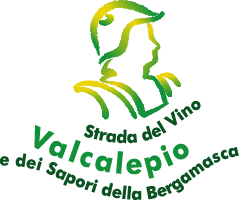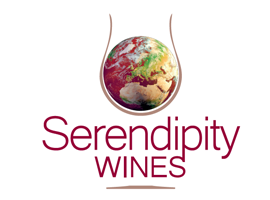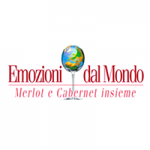Wines & Flavours
Wines
The Province of Bergamo boasts a full spectrum of quality wine production, capable of winning over wine-lovers from the entire world.
The Bergamo area also has plenty of other typical local products, including the highest number of Protected Designation of Origin cheeses in Italy, meats and salami, stuffed pasta, especially, Casoncelli, beer, honey, jams, bread, pastries, olive oil, fruit and vegetables.
Among the wine offering is:
This is a passito, or raisin, red wine obtained from 100% Moscato di Scanzo grapes, produced and vinified entirely in the Municipality of Scanzorosciate.
Moscato di Scanzo is an indigenous grape variety that was rediscovered in the 1980s.
Moscato di Scanzo DOCG is obtained by a procedure that envisages harvesting from the end of September to the middle of October, and the drying of the grapes for a minimum of 21 days.
The drying process involves laying the grapes on special racks or in special boxes in ventilated and temperature controlled rooms.
The production specification requires the wine to be aged for a minimum of 2 years.
The wine has a fairly intense ruby red colour, which tends to cherry red with garnet reflections. It has a delicate yet intense, persistent and characteristic aroma. On the palate it is sweet, pleasant and harmonious, with a light almond aftertaste and pronounced aroma, and hints of dried rose, clary sage, acacia honey, red fruits, and, in some cases, spicy notes of pepper and cinnamon.
This is the new Bergamasca DOC wine, recognized by Italian Ministerial Decree in May 2011. The first harvest was, indeed, in 2011, and has led to a real renaissance in various native vines that have been cultivated for centuries in the Bergamo area.
The Controlled Designation of Origin (DOC) includes 14 single variety grapes providing a complete and varied range of whites, reds, rosés, and still and sparkling wines.
The 14 grape varieties include: Colleoni Pinot Bianco, Colleoni Pinot Grigio, Colleoni Chardonnay, Colleoni Incrocio Manzoni Bianco, Colleoni Moscato Giallo, Colleoni Moscato Giallo Passito, Colleoni Schiava, Colleoni Merlot, Colleoni Marzemino, Colleoni Cabernet, Colleoni Franconia, Colleoni Incrocio Terzi, Colleoni Novello, and Colleoni Spumante.
This white wine is made from a combination of Chardonnay, Pinot Blanc and Pinot Gris grapes in the specific proportions: 55-80% Pinot Blanc and/or Chardonnay, 20-45% Pinot Gris.
The wine has a straw yellow colour and an intense aroma, with clear hints of fruit reflecting its vines of origin.
On the palate, it is dry and decisive, giving way to a full and harmonious final sensation.
It pairs particularly well with appetizers, first courses with white sauces, and fish dishes.
It is best served at a temperature of around 10°C.
The undisputed star of the Controlled Designation of Origin, recognized in 1976, is Valcalepio Rosso DOC, a blend of Merlot and Cabernet Sauvignon grapes vinified separately due to different grape ripening times.
At the beginning of spring, the wine is carefully combined in the proportion indicated by the specification, with 40-75% Merlot and 25-60% Cabernet.
It is then left to age in a barrel for a few months before its release for consumption from the 1st of November of the year following the harvest.
Valcalepio Rosso DOC has a ruby red colour tending towards garnet, an intense aroma with a clear note of black cherry. It offers the palate a dry, soft flavour, with a full and satisfying final sensation of harmony.
It pairs perfectly with red and white meat dishes, roasts, game and cheeses.
It is best served at a temperature of about 18°C, in its own special Valcalepio wine glass.
The Bergamo territory’s fitness for the production of fine red wines has made it possible, for certain lots endowed with the right characteristics of maturity and structure, after a 3-year ageing process, to be worthy of the term “Riserva”, or “Reserve”.
The Riserva has all the qualities of Valcalepio Rosso DOC, but with greater structure and a superior personality.
The richness of its sweet tannins, due to its extensive wood ageing, makes it an imposing yet pleasantly drinkable wine that can be delightfully paired with consistent meat dishes and flavoursome cheeses.
Once again, the wine’s most impassioned goal and accomplishment is harmony.
This is a passito, or raisin, red wine obtained from 100% Moscato di Scanzo grapes, produced and vinified outside of the confines of the Municipality of Scanzorosciate.
Moscato di Scanzo is an indigenous grape variety that had become legendary due to its rarity until its revival in the 1980s.
Valcalepio Moscato Passito DOC is obtained by a procedure that envisages harvesting during the first few days of October, and the drying of bunches for at least 21 days.
Only after this time can the winemaking begin with an initial fermentation phase on the skins and a secondary phase exclusively with the must.
Following the slow fermentation process and subsequent refinement, the wine can be sold from the arrival of spring in the second year following the harvest.
The wine has a ruby red colour and an intense aroma with hints of dried rose, clary sage, acacia honey, red fruits, and, in some cases, spicy notes of pepper and cinnamon.
It is generally enjoyed at the end of a meal, and brings out the very best in dry pastries, but it is also well worth trying in combination with different cheeses, particularly blue varieties. It is best served at 15°C.
Wine production in the Bergamo area does not stop at Denominazione di Origine Controllata (DOC), or Controlled Designation of Origin (PDO), wines, but is complemented by a comprehensive range of wines with the Indicazione Geografica Tipica (IGT), or Typical Geographical Indication (TGI), classification. These wines express a strong bond with the territory through the use of traditional vines and vinification processes to enhance the sublime pleasure of drinking wine.
It is in this context that winegrowers feel freer to experiment and express their own personalities and ambitions to the absolute maximum.
As for dairy and cheese production with the Protected Designation of Origin (PDO, or DOP in Italian) in the Province of Bergamo, there is Formai de Mut, from the Upper Brembana Valley, Taleggio, Bitto, Gorgonzola, Grana Padano, Quartirolo Lombardo, Salva Cremasco, Provolone Valpadana, and Strachitunt.
The Territory
The territory of the Road of Valcalepio Wine and of the Flavours of the Bergamo Area is characterised by the province’s foothills between the Adda and Oglio Rivers.
It is a territory rich in history, traditions and culture, enough to satisfy the insatiable curiosity of most demanding of wine-tourists for days and days.
This long and narrow strip of sometimes almost inaccessibly inclined slopes features around 800 hectares of fine vineyards and a few dozen hectares of olive groves, the remaining part of a more extensive historical area that Bergamo cultivators are defending with everlasting courage and passion.
This is all framed by medieval castles and churches and abbeys from every age, contours of a rich and exciting history bound to wine and magnificently represented by the emblem of the Valcalepio valley consortium bearing the effigy of the great fifteenth century captain Bartolomeo Colleoni.
Still today, the area offers plenty of idyllic, unspoilt places, where nature is the protagonist and nature lovers can enjoy the full range of sensations that modernity often threatens to leave by the wayside.
Let’s not forget the area’s great tradition of hospitality and of farming activities, farmhouse accommodation and establishments intimately bound to the territory and offering the discovery of legendary, ancient flavours.
Cheeses and cured meats
Naturally, we have to mention the territory’s renowned dairy production, boasting famous cheeses such as Taleggio, and many other less well-known but excellent cheeses of ancient tradition, such as Formai de Mut, Branzi, Strachì Tund, from the various valleys, as well as Stracchini and Caprini, coming from the territory’s revival of goat breeding.
There is also great tradition and art in the use of pork for the production of lard, bacon, sausages, Cotechino sausage and Bergamo salami.
One of the last rediscoveries of the region is gaì, or sheep salami. And lest we forget the quintessential Bergamo dish, polenta!
Other notable flavours of the territory include local beer, honey, many other varieties of salami, stuffed pasta, delicious pastries, and much more.





